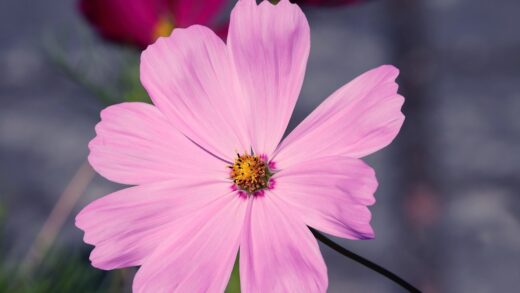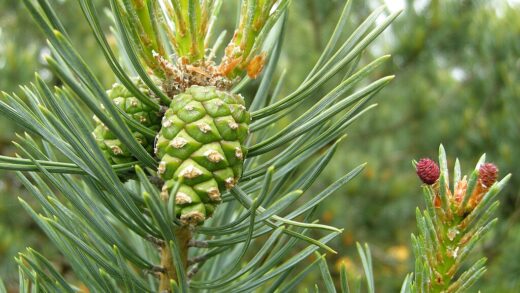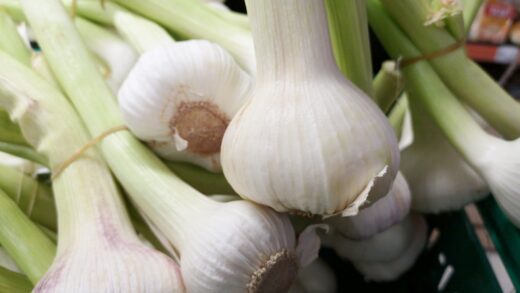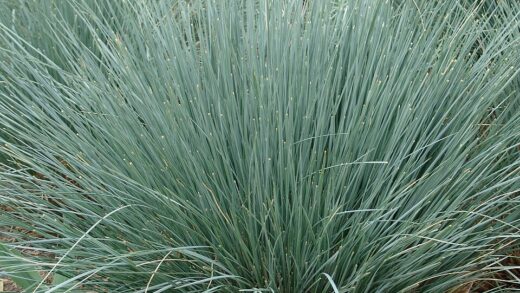The Chinese juniper is a remarkably versatile and resilient evergreen, valued in horticulture for its diverse forms, ranging from low-growing ground covers to towering pyramidal trees. Proper care is fundamental to unlocking its full ornamental potential and ensuring its long-term health and vitality in any landscape setting. This involves a holistic approach that considers its environmental preferences, nutritional needs, and structural maintenance from the moment of planting throughout its lifespan. Understanding these core principles allows for the successful cultivation of this species, preventing common issues and promoting robust, vigorous growth that enhances garden aesthetics year-round. A well-cared-for Chinese juniper will exhibit dense foliage, vibrant color, and strong resistance to environmental stressors.
The foundation of successful Chinese juniper care begins with selecting an appropriate planting site, as this decision influences the plant’s health more than almost any other factor. This species thrives in locations that receive full sun, meaning at least six to eight hours of direct sunlight per day, which is crucial for dense foliage and strong color development. While it can tolerate a minor amount of partial shade, prolonged periods in low light will lead to sparse, leggy growth and an increased susceptibility to fungal diseases. The planting location must also provide ample space for the specific cultivar to reach its mature size without being crowded by other plants, buildings, or structures, ensuring good air circulation around the entire plant.
Proper soil conditions are equally critical for the long-term well-being of the Chinese juniper, which demonstrates a notable adaptability to various soil types. The most important soil characteristic is excellent drainage; this species is highly intolerant of waterlogged conditions, which can quickly lead to root rot and the subsequent decline of the plant. Ideal soils are sandy or loamy, but junipers can also perform well in clay soils provided the site is sloped or the planting area is amended to improve drainage. Before planting, it is beneficial to incorporate organic matter like compost or well-rotted manure to improve soil structure and provide a slow release of essential nutrients.
Once established, the Chinese juniper is known for its impressive drought tolerance, making it a sustainable choice for water-wise landscaping. However, consistent moisture is essential during the first one to two growing seasons to allow the root system to develop fully and anchor itself deep into the soil. During this establishment period, the soil should be kept consistently moist but not saturated, requiring regular checks and deep watering, especially during dry spells. After the plant is well-established, supplemental irrigation is typically only necessary during prolonged periods of extreme heat and drought, as its extensive root system becomes efficient at sourcing water.
Soil and site selection
Selecting the optimal site is a foundational step that dictates the future health and aesthetic appeal of a Chinese juniper. The primary consideration must be sunlight exposure, as this species has a high light requirement for photosynthesis and maintaining its characteristic dense foliage. A location offering at least six hours of unobstructed, direct sunlight daily is considered ideal for most cultivars, promoting vigorous growth and vibrant needle coloration. Insufficient light exposure invariably results in a thinned-out canopy, poor color, and a general lack of vitality, making the plant more vulnerable to opportunistic pests and diseases. Therefore, a thorough assessment of the proposed planting area throughout the day is necessary to confirm it meets these light requirements.
More articles on this topic
Beyond sunlight, spatial planning is crucial for the long-term success of the plant, accommodating its mature size and shape. Chinese juniper cultivars vary dramatically in their growth habits, from prostrate groundcovers to large, upright trees, so understanding the specific variety’s ultimate dimensions is essential. The chosen site should allow the juniper to grow to its full potential without infringing on walkways, building foundations, or other plants, which can lead to competition for resources and the need for excessive pruning. Proper spacing also facilitates adequate air circulation around the plant, a key factor in preventing the development and spread of fungal pathogens that thrive in stagnant, humid conditions.
The physical and chemical properties of the soil play an integral role in the health of the Chinese juniper’s root system. This species demonstrates a preference for well-drained soil and will not tolerate “wet feet,” where water collects and stagnates around the roots. Before planting, a simple percolation test can be performed by digging a hole and filling it with water to observe how quickly it drains. If water remains for an extended period, the site’s drainage is inadequate and must be improved by incorporating coarse sand, gravel, or organic amendments like pine bark fines to enhance soil porosity and prevent conditions conducive to root rot.
While adaptable to a range of soil pH levels, Chinese junipers generally perform best in soils that are slightly acidic to neutral, typically within a pH range of 5.5 to 7.5. It is advisable to conduct a soil test to determine the existing pH and nutrient profile of the planting site. This information allows for precise amendments if necessary, such as adding lime to raise the pH in overly acidic soils or incorporating elemental sulfur or sphagnum peat moss to lower it in alkaline conditions. Correcting the soil pH ensures that essential nutrients are readily available for uptake by the plant’s roots, supporting robust and healthy growth from the outset.
Watering and moisture management
Effective moisture management is critical, particularly during the establishment phase of the Chinese juniper’s life. For the first year or two after planting, the developing root system requires a consistent supply of water to expand and penetrate deep into the soil profile. During this period, a regular watering schedule should be implemented, aiming to provide a deep soaking that moistens the entire root zone, rather than frequent, shallow applications. A general guideline is to water thoroughly once or twice a week during the growing season, adjusting the frequency based on rainfall, temperature, and soil type. This practice encourages the roots to grow downward in search of moisture, which is key to developing drought resistance.
More articles on this topic
Once the Chinese juniper is fully established, its water requirements decrease significantly, as it develops a high degree of drought tolerance. The extensive root system becomes highly efficient at extracting moisture from the soil, making it well-suited for xeriscaping and low-maintenance garden designs. For mature plants, supplemental irrigation is generally only required during extended periods of drought, typically defined as several weeks without significant rainfall, especially when combined with high temperatures. When watering is necessary, it is still best to apply it slowly and deeply to ensure it reaches the entire root zone, rather than just wetting the surface.
Observing the plant and the surrounding soil is the most reliable method for determining when to water. Instead of adhering to a rigid schedule, check the soil moisture at a depth of a few inches; if the soil feels dry to the touch, it is time to consider irrigation for younger plants. For established specimens, visual cues such as a slight dulling of the foliage color can indicate the onset of water stress, though one should act before significant wilting or browning occurs. It is crucial to differentiate these signs from disease symptoms to ensure the correct remedial action is taken.
Proper watering techniques are as important as the frequency and amount of water applied. Using a soaker hose or a drip irrigation system is highly effective, as these methods deliver water directly to the root zone with minimal loss to evaporation and help keep the foliage dry. Wet foliage, especially overnight, can create an ideal environment for the development of fungal diseases such as Phomopsis tip blight and Kabatina tip blight. If overhead watering is the only option, it should be done early in the morning to allow the foliage ample time to dry completely before nightfall, thereby minimizing disease risk.
Fertilization and nutrition
The Chinese juniper is not a heavy feeder and generally thrives in average soil without the need for an intensive fertilization regimen. In many residential landscapes where the soil is reasonably fertile, established junipers may not require any supplemental feeding for years, obtaining sufficient nutrients from the natural decomposition of organic matter. However, in nutrient-poor or sandy soils, or when faster growth is desired, a balanced approach to fertilization can provide significant benefits. The key is to avoid over-fertilization, which can lead to weak, succulent growth that is more susceptible to pests, diseases, and winter injury.
For newly planted junipers, it is best to refrain from applying fertilizer at the time of planting, as this can burn the developing roots. Instead, focus on enriching the soil with organic matter like compost, which provides a slow, gentle release of nutrients while improving soil structure. After the first year, once the plant has had a chance to establish its root system, a light application of a balanced, slow-release granular fertilizer can be applied in the early spring. A formulation with an N-P-K ratio such as 10-10-10 or 12-4-8 is generally suitable for providing the essential macronutrients needed for healthy growth.
The timing of fertilizer application is crucial for maximizing its benefits and preventing potential harm. The ideal time to fertilize Chinese junipers is in the late fall after the first hard frost or in the early spring just as new growth begins to emerge. Applying fertilizer during these periods ensures that nutrients are available when the plant is actively growing and can utilize them most effectively. Avoid fertilizing in late summer or early fall, as this can stimulate a flush of new growth that may not have time to harden off before the onset of winter, making it vulnerable to frost damage.
When applying granular fertilizer, it is important to follow the product label instructions carefully to determine the correct application rate based on the size of the plant. The fertilizer should be spread evenly over the entire root zone, which typically extends to the dripline (the outer edge of the branches) and slightly beyond. After application, the fertilizer should be lightly raked into the soil surface and then watered in thoroughly. This helps to move the nutrients down into the root zone where they can be absorbed and prevents the granules from washing away or burning the foliage.
Pruning for health and shape
Pruning is a vital aspect of Chinese juniper care, serving multiple purposes including maintaining the desired size and shape, removing dead or diseased wood, and improving air circulation within the plant’s canopy. The optimal time for pruning is during the plant’s dormant season in late winter or very early spring, just before the onset of new growth. Light trimming and shaping can also be performed in the late spring or early summer after the initial flush of growth has hardened off. Avoid heavy pruning in late summer or fall, as this can encourage new growth that is susceptible to winter damage and may create entry points for pathogens.
When pruning for health, the first priority is to identify and remove any branches that are dead, damaged, or showing signs of disease. This type of pruning, known as cleaning, can be done at any time of year and is essential for preventing the spread of pathogens and improving the overall appearance of the juniper. Use sharp, clean pruning tools to make precise cuts back to a healthy lateral branch or the main trunk. For branches infected with diseases like tip blight, it is important to cut well below the infected area and to sterilize the pruning tool between cuts with a solution of 10% bleach or rubbing alcohol to prevent cross-contamination.
Shaping the Chinese juniper should be done with a clear understanding of its natural growth habit to achieve a pleasing and sustainable form. The goal is to enhance the plant’s inherent character rather than forcing it into an unnatural shape. This is typically achieved through selective thinning cuts, which involve removing entire branches back to their point of origin to open up the canopy and reduce density. Avoid shearing junipers with hedge trimmers, as this practice only removes the outer layer of growth, leading to a dense outer shell of foliage that shades out the interior, causing it to turn brown and die back over time.
A common issue with older junipers is the development of “dead zones” in the center of the plant where foliage has died due to lack of sunlight. It is important to understand that junipers do not regenerate new growth from old wood, so cutting back into these leafless, brown areas will result in permanent bare spots. Therefore, pruning must be limited to the green, foliated parts of the branches. Regular, light pruning from a young age is the best strategy to maintain a manageable size and prevent the plant from becoming overgrown and developing a large central dead zone that cannot be rejuvenated.
Long-term maintenance and monitoring
Consistent monitoring is a cornerstone of effective long-term care for the Chinese juniper, enabling the early detection of potential problems before they become severe. This involves regularly inspecting the plant for any signs of stress, disease, or pest infestation. Check the foliage for discoloration, such as yellowing or browning, and look for evidence of pests like spider mites, bagworms, or scale insects. Examining the branches and trunk for cankers, wounds, or unusual growths is also important. A proactive approach to monitoring allows for timely intervention, which is often simpler and more effective than dealing with an advanced issue.
Maintaining a layer of organic mulch around the base of the Chinese juniper offers numerous long-term benefits. A two- to three-inch layer of mulch, such as wood chips, pine straw, or shredded bark, helps to conserve soil moisture by reducing evaporation, which is especially beneficial during periods of drought. Mulch also suppresses weed growth, which reduces competition for water and nutrients, and moderates soil temperature, protecting the roots from extreme heat in the summer and cold in the winter. As the organic mulch decomposes, it gradually adds nutrients to the soil, improving its structure and fertility over time, but ensure the mulch is kept a few inches away from the main trunk to prevent moisture buildup and potential rot.
Even with excellent care, established Chinese junipers can sometimes face environmental challenges that require intervention. For example, in regions with heavy snowfall, the weight of snow and ice can cause branches to bend or break, particularly on upright, columnar cultivars. To prevent this type of damage, loosely wrap the branches with twine or burlap in the late fall to provide extra support. In areas prone to strong winter winds, constructing a temporary windbreak using burlap or snow fencing on the windward side can protect the foliage from desiccation, a condition known as winter burn where the needles lose moisture faster than the frozen roots can absorb it.
Over time, the soil around a Chinese juniper can become compacted, especially in areas with heavy foot traffic or the use of lawn equipment. Soil compaction reduces pore space, restricting the movement of air, water, and nutrients to the root system and impeding root growth. To alleviate compaction, occasional core aeration of the surrounding soil can be beneficial. This process involves removing small plugs of soil to create channels that allow for better penetration of water and air. Following aeration with a top-dressing of compost can further improve the soil structure and provide a slow release of valuable organic matter and nutrients to support the plant’s continued health and vigor.


















